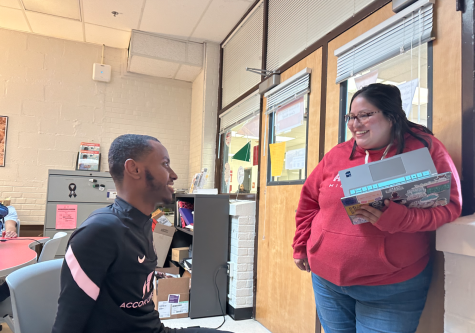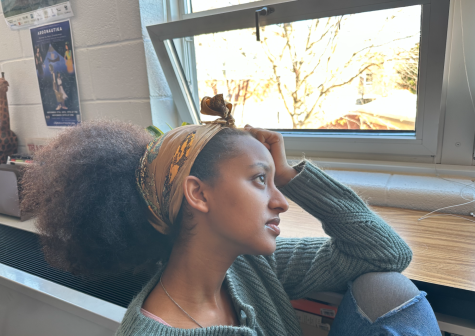Lower the volume or suffer hearing loss
Listening to music too loudly can damage your eardrums
When walking down the hallways, seeing students with headphones hanging from their ears isn’t an uncommon sight.
Between class changes, during lunch and after school, students are always in their own worlds while listening to music on their personal devices but they aren’t aware of the negative effects that these headphones pose.
Whether students are using the typical Apple inner ear headphones or their expensive over-the-head Beats, students use headphones as outlets to block out their surroundings.
Being in a high school environment, the surrounding noise may be too difficult to completely cancel out and as a result, students tend to raise the volume of their headphones little by little.
“It takes me out of school for a few minutes and I relax while going to the next class,” senior Daniel Chamul said.
This is a mistake that most students make. Most headphones are not supposed to be used to block outside noises and are simply gadgets that are made to make listening to music more convenient.
Using basic earbuds in replacement of noise-cancelling earplugs or headphones is a practice that needs to be stopped because of the potential risks that may result from high volumes of music.
As a student continues to blast their music, other peers and teachers can hear the muffled beats and rhythm of the music without even having to share earbuds.
Those students listening to their music on full blast don’t even seem to realize that they are disturbing their neighbors with their loud music.
Not only is this a public disruption, but the intense drumming within a student’s ears can also damage their own hearing.
According to the World Health Organization, safe listening depends on three different factors– intensity, duration and frequency. It is important to monitor how loud your music is as well has how long and how often you blast your music.
Increasing the volume frequently will damage your hearing as the powerful sound waves will continuously exhaust your ears’ sensory cells.
Sometimes, being exposed to extreme volumes for too long could result in a ringing sensation within the ear, an indication of temporary hearing loss.
However, as you continue to listening to music at such high volumes on a daily basis, the strain on your eardrums and other nerves will become permanent, ultimately leading to hearing loss that is irreversible.
The World Health Organization states that 85 decibels is the highest volume level that is considered to be safe for longer durations of exposure of approximately eight hours.
Of course, the time and duration will change depending on the different volume levels. If you’re listening to your music at the high volume of over 100 decibels, your ears can only handle that deafening level for a short amount of time.
For most personal audio devices like an iPhone or MP3 player, their sound capabilities typically range between 65 decibels to as high as 135 decibels.
Keeping this in mind, physicians recommend keeping the volume bar below two thirds of its maximum capacity.
The little hair-like cells within your inner-ear are sensitive and exposing them to intense amounts of volumes is a risk you shouldn’t take.
Those cells have multiple functions which include filtering out dirt and bacteria and they also help reduce small amounts of sound waves that travel to your brain.
By damaging those cells, the noise that enters your ears is bound to increase, leading to even more complications.
This is why you should limit the intensity of your music and watch out for others who have a tendency to blast their music.
Since noise-induced hearing loss is preventable, there is no reason for someone to lose their sense of hearing due to irresponsible actions of blasting music.
It’s important to keep in mind that if the person standing next to you can hear your music, then it’s too loud and you should take the time to lower your volume.

Active member in various honor societies and clubs, senior Julie Nguyen has been on The A-Blast staff for three years. She is currently the Health Editor...






